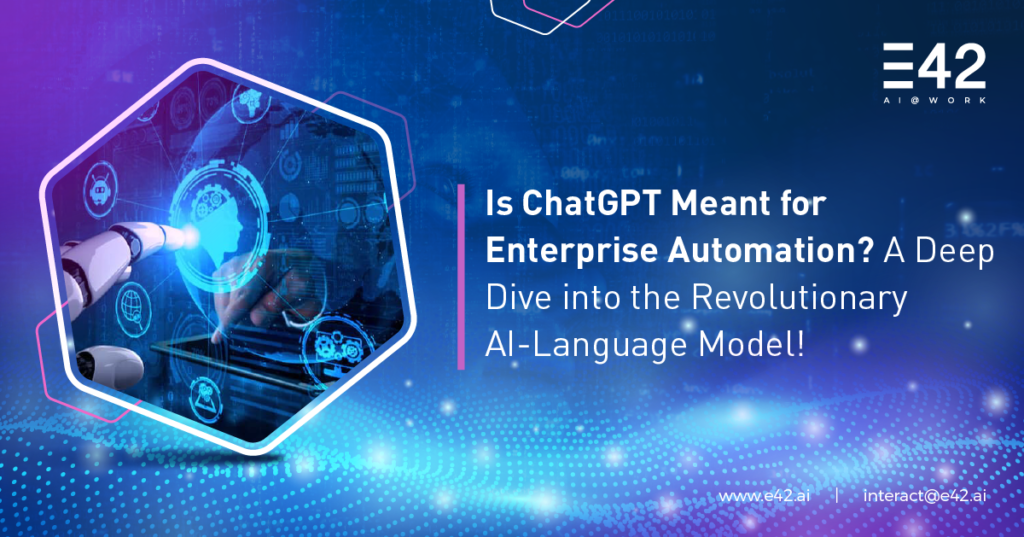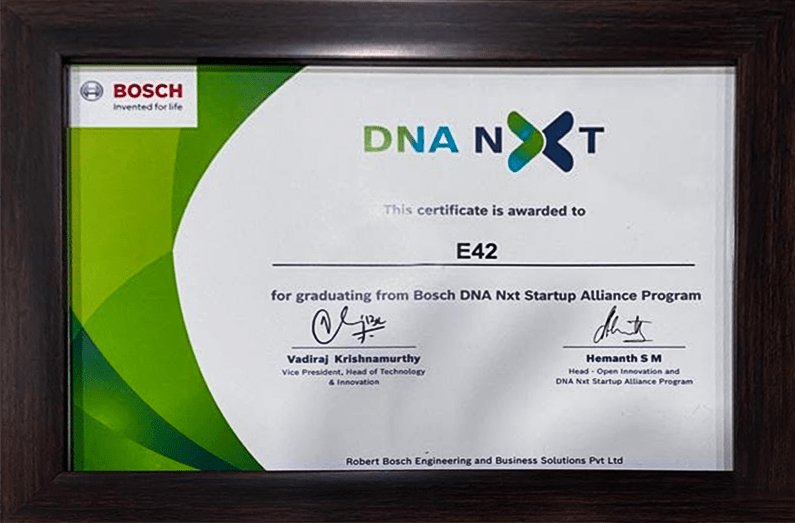ChatGPT has undoubtedly become a global phenomenon, capturing widespread attention and recognition in the field of artificial intelligence. However, amidst the plethora of articles written about ChatGPT, a crucial question remains unanswered: what impact does it have on enterprise automation? To fully grasp its implications, we must view ChatGPT through the lens of intelligent automation and assess its potential for the industry as a whole.
Considering the remarkable capabilities of ChatGPT, it prompts us to ponder whether this AI tool can be compared to the transformative role that language played in human evolution over 150,000 years ago. But before delving into the reasons behind ChatGPT’s superiority over existing generative AI models, let’s take a step back and explore the history and evolution of language itself. Gaining insights into the roots and progression of language offers a crucial backdrop for recognizing the importance of ChatGPT’s breakthroughs in the realm of AI.

From Words to Algorithms: The Story of Language Evolution and NLP
Language, unlike simple vocalizations used by animals to express danger, empowered our human ancestors, Homo sapiens, to not only communicate the presence of impending danger but also describe its nature and location in detail. Language bestowed upon them the ability to gossip and spread messages, marking a pivotal turning point in human progress and development. Millennia later, around 3200 BC, the advent of proto-writing introduced basic drawings, pictographs, and symbols, enabling human beings to communicate on a whole new level. Writing down thoughts, ideas, and stories preserved vital information for future generations and facilitated further development.
Fast-forward to the present era of technological advancements, where language models have played a critical role in the field of natural language processing (NLP). NLP empowers machines to comprehend, understand, and replicate human language, unlocking new possibilities for communication, information retrieval, and various applications. Early language models, such as the Markov model, predicted the probability of the next word in a sentence based on preceding words. In the 1980s and 1990s, researchers explored more sophisticated models like Hidden Markov Models (HMMs) and neural network-based models, capturing complex language structures and enhancing performance in speech recognition and machine translation.
In recent years, large pre-trained language models like GPT-3, the foundation of ChatGPT, have emerged as powerful tools for NLP tasks. Trained on vast amounts of text data, these models can generate human-like responses to a wide range of prompts and questions, bridging the gap between machines and human language. This breakthrough has opened up new avenues for developers, researchers, and anyone interested in exploring the potential of NLP.
How ChatGPT is Pushing the Boundaries of Generative AI-Language Models
ChatGPT distinguishes itself as a remarkable generative AI-language model for several reasons. Developed on OpenAI’s GPT-3 model, it stands as the most dominant language AI model in its category, boasting an astounding 175 billion parameters. With its utilization of a recurrent neural network (RNN) architecture, ChatGPT excels in comprehending language and producing conversational responses. It showcases an impressive array of applications, including text translation, text generation, and dialogue creation. The platform stands out as one of the largest and most powerful AI language models available today, having been trained on a vast amount of text data exceeding 45 terabytes. This extensive training enables ChatGPT to generate highly coherent and contextually appropriate responses. Unlike models designed for specific tasks, ChatGPT is a versatile general-purpose model capable of performing various language-related tasks, including translation, text completion, summarization, and chatbot interaction. Its adaptability allows developers to fine-tune it for specific applications such as customer service, education, or gaming, achieving higher accuracy and efficiency. With its incorporation of advanced techniques like attention mechanisms and transformer-based architectures, ChatGPT represents the forefront of NLP advancements. Moreover, its ability to generate creative and ingenious responses makes it a valuable tool for tasks like generating novel text, inspiring new ideas in creative writing, and enhancing marketing strategies. ChatGPT’s wide-ranging capabilities make it particularly beneficial for developers, researchers, and anyone exploring the potential of NLP in areas such as language translation, code debugging, copywriting, and A/B testing strategies.
ChatGPT and Enterprise Automation
ChatGPT possesses the ability to analyze and comprehend human language, enabling it to provide relevant responses in various contexts. As a valuable information source for businesses, ChatGPT can gather data on specific topics such as market trends, consumer behavior, and industry insights. It offers recommendations, answers queries, and generates reports and summaries, but it requires articulate and precise questions to yield optimal results. This characteristic poses a perceived threat to tools like Google, which operate on a ‘search and retrieval’ model in an open space rather than an enterprise-specific environment.
However, despite being a large language model trained on billions of parameters, ChatGPT is unable to undergo training with a small dataset. Consequently, it falls short in powering intelligent process automation beyond conversational AI. Cognitive Process Automation (CPA), on the other hand, demands that the AI model understands a limited set of enterprise data, processes information from structured and unstructured file formats obtained from multiple channels, makes real-time decisions, and performs tasks accordingly.
To automate complex workflows effectively, organizations must rely on specialized AI tools designed for interacting with third-party and internal systems, managing information through API calls, and executing specific actions based on collected data. These tools are trained on a restricted amount of enterprise data, enabling them to learn from it and apply that knowledge to perform multiple tasks. While ChatGPT excels in generating text and providing answers, it lacks the capability to automate intricate workflows in an enterprise setting. Nonetheless, ChatGPT may contribute to some level of automation in areas like content creation and software development, potentially posing a subtle threat to certain entry-level positions within those fields.
Undoubtedly, ChatGPT represents a remarkable achievement in the realm of AI, particularly in language processing. OpenAI’s recent announcement of the development of GPT-4, an enhanced version of ChatGPT’s architecture, demonstrates its commitment to continuous improvement. With GPT-4, users can expect even more refined responses closely aligned with human language and thought processes. As the development progresses, ChatGPT will undoubtedly maintain its position at the forefront of AI language processing, offering cutting-edge solutions for diverse industries and applications. However, for the automation of complex workflows, organizations will need to rely on specialized tools such as cognitive process automation (CPA) or intelligent automation tools.
CPA or intelligent automation tools are specifically designed to automate enterprise-level tasks, capable of managing information through API calls, interacting with third-party or internal systems, and executing specific actions based on gathered data. They are trained on a specific set of enterprise data, enabling them to learn from it and apply that learning to multiple tasks.



